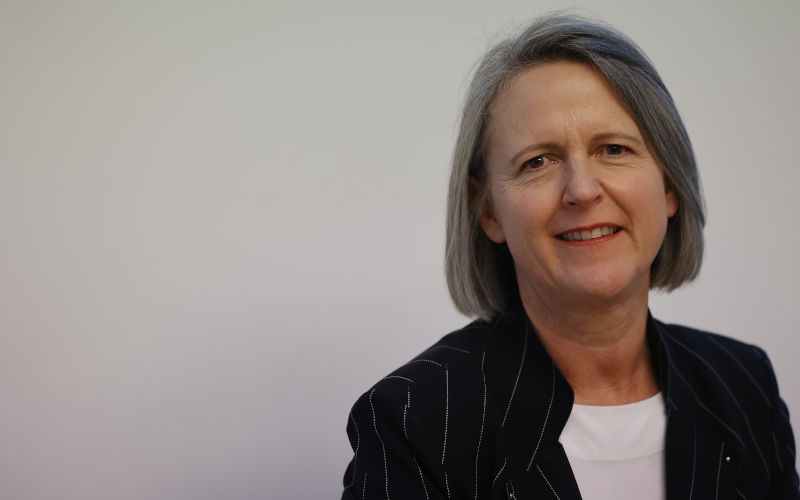It took more than a century, but women are taking charge of Australia’s economy – here’s why it matters
June 17, 2025
For the first time in its 124-year history, Treasury will be led by a woman.
Jenny Wilkinson’s appointment is historic in its own right. Even more remarkable is the fact she joins Michele Bullock at the Reserve Bank and Danielle Wood at the Productivity Commission.
Australia’s three most powerful economic institutions are now led by women economists. In economics, this is not normal. But it certainly does matter.
Stubbornly male
Imagine if only 17% of economics professors were men. It would feel unusual; people would ask why the field was so heavily skewed. But the reality is the opposite: 83% of economics professors in Australia are male.
And yet, this imbalance is almost invisible. Women make up just about one-third of secondary pupils studying economics and 40% of students enrolled in economics courses at university.
In the private sector, women economists are roughly one in three.
So while the appointments of Wilkinson, Bullock and Wood feel groundbreaking, the profession as a whole remains stubbornly male. Still, the leadership story is worth celebrating. When young women see leaders who look like them, they’re more likely to imagine themselves in those roles too.
As women increasingly take the helm, the old stereotype of a suit-clad man with a briefcase gives way to a broader, more inclusive image of what an economist can be.
The public service is leading the charge. As of 2023, women held 53% of senior executive service positions in the Australian Public Service, up from 46% in 2019.
Merit and diversity
Thankfully, unlike other parts of the world, we live in a country where these appointments haven’t triggered claims of so-called “ diversity hires”. To be clear: these female pioneers weren’t appointed because they are women.
Each has decades of experience, technical firepower, and deep policy credentials. Wilkinson has led the Department of Finance and the Parliamentary Budget Office. Bullock has held almost every senior role at the Reserve Bank. Wood has shaped public debates on intergenerational equity and tax reform with clarity and rigour.
The idea that diversity is somehow in tension with merit is a false binary. Diverse groups make better decisions and are more creative, especially in high-stakes settings.
Decades of economics and business research have shown that incorporating diverse perspectives into decision-making only strengthens the outcomes. Decisions made and executed by diverse teams delivered 60% better results than those by non-diverse teams.
Merit isn’t just what’s on paper, it’s shaped by how we judge it.
When men and women perform equally well, success is more often credited to skill for men and to luck for women. Swap a male name for a female one on a CV, teaching evaluation or reference letter, and perceptions of competence, leadership and hireability start to shift.
These unconscious biases don’t just affect who gets ahead; they shape how we define merit in the first place.
Will it make a difference?
Economics often prides itself on being objective and neutral. While the economic models may be technically gender-blind, the questions we ask and investigate rarely are.
This is where gender diversity matters – not just in who holds the top jobs, but in what gets researched and how decisions are made. There’s growing evidence male and female economists don’t just ask different questions, they also approach problems differently.
One study found female central bankers tend to act with greater independence and deliver lower inflation. A United States study and another in Europe showed striking gender differences in how economists think about a range of areas, including labour markets, taxation, health and the environment, and more broadly on public spending – everything from welfare to the military.
Having more diverse perspectives doesn’t dilute economics – it deepens it. It makes the discipline more responsive to the diversity of the real-world challenges it’s meant to address.
Economic policies impact the whole society. So does the composition of economists.
So, what’s next?
Of course, three women in top economic roles won’t create miracles overnight – they all operate within existing systems and structures.
So, what can we expect from Wilkinson’s leadership? Her time at the Department of Finance suggests a steady, pragmatic hand: consultative, strategic and deeply experienced.
Wilkinson brings bipartisan credibility, a sharp grasp of fiscal discipline, and the capacity to act decisively in a crisis, as we saw during COVID. She won’t remake Treasury overnight, but she’s well placed to lead it with rigour, integrity and a long-term view.
This moment matters for women in economics. It shows change is possible in the profession, and it could mark the start of economic policy that truly reflects the diversity of the people it serves.
Republished from The Conversation, 13 June 2025
Disclosure statement Duygu Yengin is affiliated with the University of Adelaide, Women in Economics Network, and the Economic Society of Australia.
The views expressed in this article may or may not reflect those of Pearls and Irritations.
